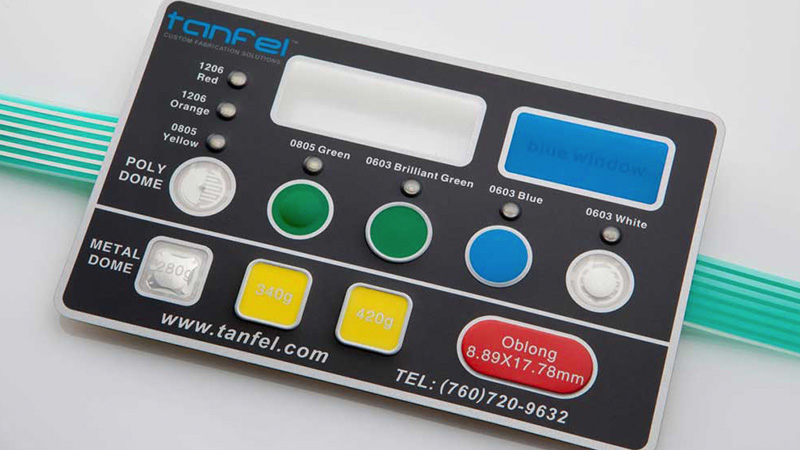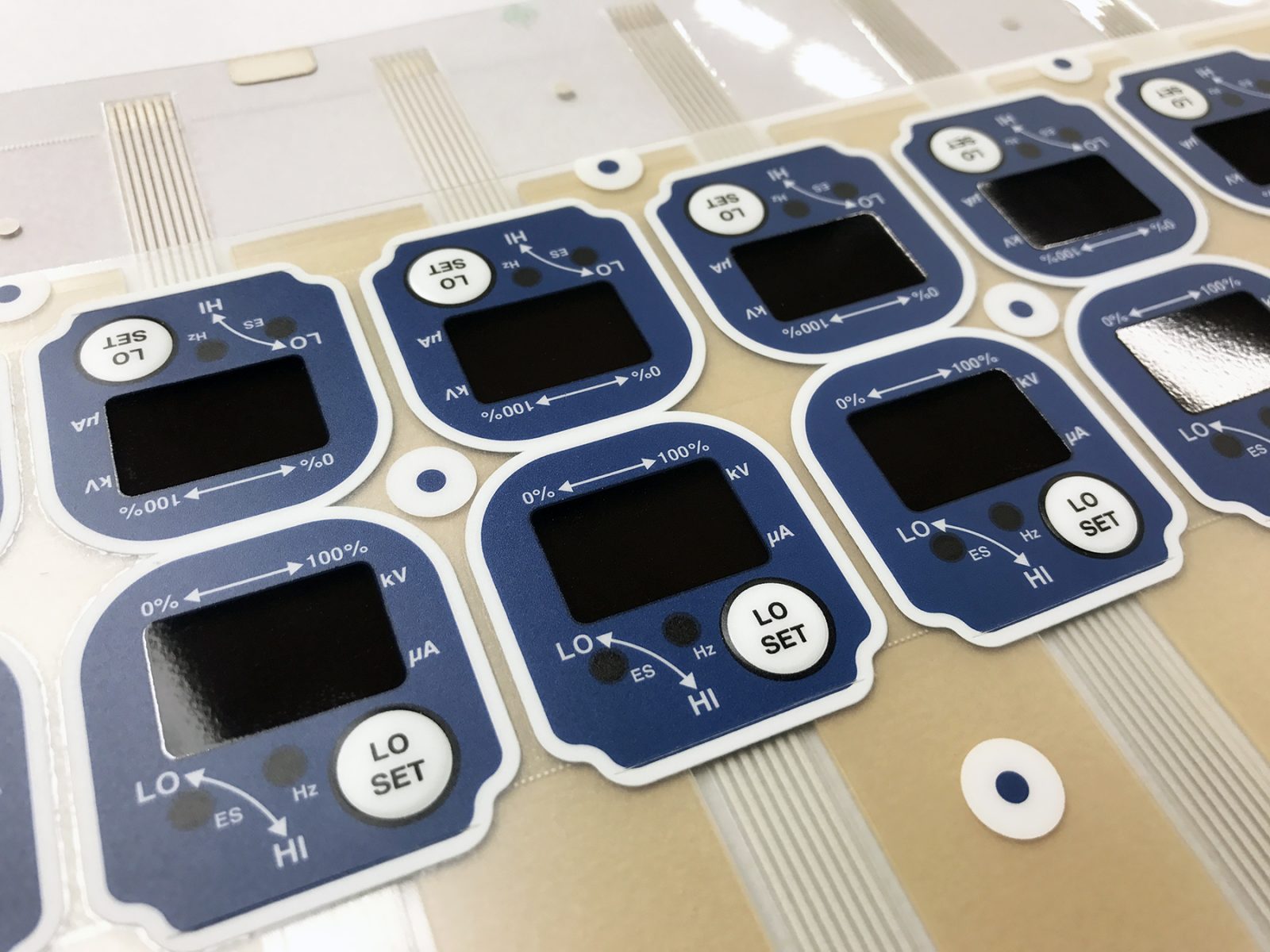Membrane Switches: The Best Choice for Compact and Reliable Controls
Membrane Switches: The Best Choice for Compact and Reliable Controls
Blog Article
Recognizing the Significance of Membrane Switches in Individual Interfaces
Membrane buttons are important parts in the style of efficient interface, promoting not just performance yet likewise boosting visual charm and customer communication. Their one-of-a-kind functions, such as resistance to customizable styles and ecological variables, make them suitable for a diverse array of applications across multiple industries. As we check out the future fads and numerous benefits connected with Membrane innovation, it becomes clear that these switches are a lot more than just elements; they represent a merging of technology and functionality. The ramifications of this modern technology on customer experience deserve analyzing further.
What Are Membrane Buttons?

The spacer layer, which includes adhesive buildings, enables the separation of the circuit layer from the overlay, ensuring that the switch stays in a non-activated state until pushed. When stress is related to the overlay, it presses the spacer layer, linking the void and finishing the circuit in the underlying layer. This design not only decreases the physical space needed for conventional mechanical buttons but also improves the durability of the device, as Membrane switches are typically immune to dust, wetness, and various other ecological aspects.
Commonly discovered in applications varying from consumer electronic devices to clinical tools, Membrane switches are integral to modern-day innovation, supplying a straightforward and reliable user interface that aligns with modern design demands.
Advantages of Membrane Buttons
While countless switch technologies exist, Membrane Switches deal distinct advantages that make them particularly desirable in numerous applications. One of the main benefits of Membrane buttons is their portable layout, which enables for space-saving implementations in tools where property is restricted. Their thin account not only boosts aesthetic charm however also facilitates light-weight building and construction.
Another significant advantage is their resistance to environmental variables. Membrane switches are normally sealed against wetness, dirt, and pollutants, making them perfect for usage popular settings, such as clinical tools and industrial equipment. This sturdiness extends the life expectancy of the button, decreasing upkeep prices and boosting integrity.
Additionally, Membrane buttons can be tailored to satisfy specific style demands, including special graphics and shades that improve customer communication. Their tactile comments alternatives can likewise be customized to offer an enjoyable customer experience. Furthermore, Membrane switches are cost-effective, particularly in high-volume applications, as they can be generated effectively.
Applications in Different Industries

In the consumer electronic devices industry, Membrane switches are prevalent in tools such as microwaves, cleaning machines, and remotes. Their tactile feedback and visual alternatives enhance user experience while providing a smooth, modern appearance. In addition, vehicle suppliers use Membrane switches in control panel controls and infotainment systems, where room is restricted, and customer interaction is essential.
In addition, the commercial sector leverages Membrane switches in control panels for equipment and tools, allowing for intuitive operation in frequently extreme settings. Their resistance to chemicals and moisture ensures durability and integrity in these applications. Overall, the adaptability of Membrane Switches contributes significantly to their widespread use, making them essential in different technical domains.
Design Considerations for Membrane Switches

When making Membrane switches, several key factors to consider need to be considered to make sure ideal capability and click for more info customer experience. To start with, the choice of products is important; selecting long lasting, top quality substratums can boost the button's long life and resistance to environmental variables such as moisture and temperature variations.
Second of all, the layout of the graphic overlay must prioritize quality and convenience of usage. Symbols and text need to be legible, and the format ought to facilitate user-friendly communication (membrane switches). Furthermore, responsive responses is important; incorporating a tactile dome or various other systems can enhance the individual experience by providing physical confirmation of activation
One more important factor is the button's electrical efficiency. Developers must guarantee that the conductive traces are properly designed to reduce resistance and stay clear of signal interference. This includes evaluating the called for actuation pressure and ensuring compatibility with the electronic components they will certainly user interface with.

Future Fads in Membrane Modern Technology
As technology remains to advance, Membrane buttons are positioned to advance dramatically, driven by advancements in products and making methods. One arising trend is the consolidation of advanced materials, such as conductive inks and adaptable substrates, which improve toughness and minimize the general weight of Membrane buttons. These materials not just enhance the responsive reaction however also enable for the design of buttons over at this website that can endure harsher ecological problems.
Moreover, the assimilation of touch-sensitive innovations is transforming standard Membrane Switches right into more interactive individual interfaces. Capacitive touch sensors embedded within Membrane button panels can offer a much more intuitive and receptive individual experience, straightening with the expanding demand for sleek, contemporary layouts in consumer electronic devices.
Furthermore, improvements in printing strategies, such as digital and 3D printing, enable rapid prototyping and customization of Membrane switches. This flexibility allows suppliers to react faster to market demands and customer choices.
Lastly, sustainability is coming to be a substantial focus, with makers checking out environmentally friendly products and processes. As these trends unravel, the future of Membrane technology assures description improved capability, aesthetic allure, and ecological duty, solidifying their function in sophisticated interface throughout numerous sectors.
Verdict
Finally, Membrane Switches stand for a crucial component in the layout of customer interfaces, integrating performance with aesthetic adaptability. Their benefits, including durability and resistance to ecological elements, make them suitable for varied applications throughout numerous sectors. Thoughtful style considerations improve customer communication and experience. As developments in modern technology proceed, the evolution of Membrane switches is expected to additional refine interface, driving technology and improving usability in a progressively intricate technological landscape.
Membrane buttons are indispensable components in the layout of efficient user interfaces, facilitating not only performance however also boosting visual charm and customer interaction.Membrane Switches serve as an important part in various customer interfaces, helping with a seamless interaction in between customers and electronic devices.While numerous button innovations exist, Membrane Switches offer unique advantages that make them particularly preferable in numerous applications.Additionally, Membrane buttons can be customized to fulfill certain style demands, incorporating unique graphics and colors that enhance user communication.In final thought, Membrane Switches stand for a vital element in the design of user interfaces, integrating capability with aesthetic adaptability.
Report this page